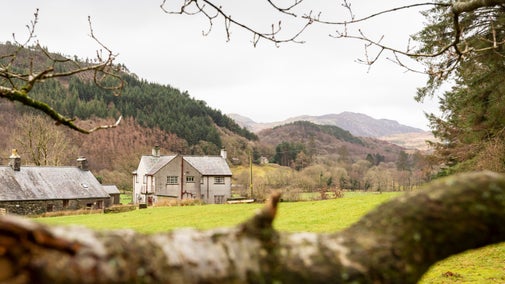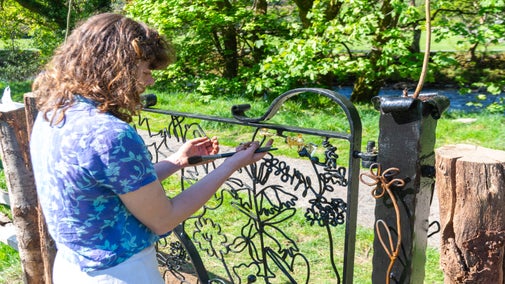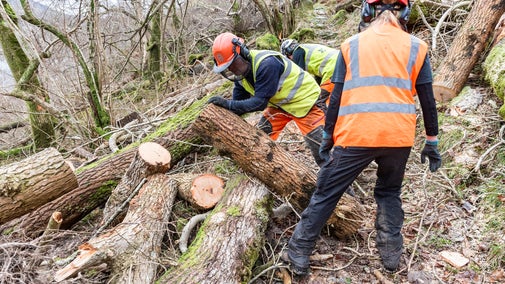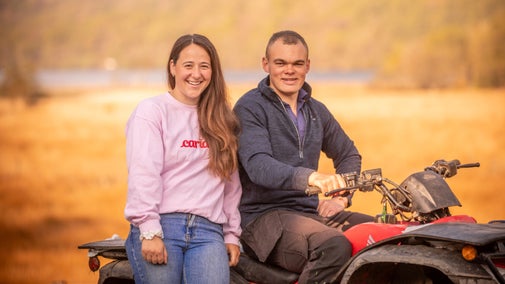
Become a member
Join today and help protect nature, beauty and history – for everyone, for ever. Enjoy access to more than 500 places with National Trust membership.
Unwind amongst the wooded foothills of Yr Wyddfa (Snowdon).
near Beddgelert, Gwynedd, LL55 4NG

| Asset | Opening time |
|---|---|
| Countryside | Dawn - Dusk |
| Car Park | Open all day |
Please keep dogs on a lead at all times as livestock is present on walking routes.
In the picturesque village of Beddgelert. Approximately 1 mile away from Craflwyn Hall and National Trust car park.
In the picturesque village of Beddgelert. Approximately 1 mile away from Craflwyn Hall and National Trust car park.
In the picturesque village of Beddgelert. Approximately 1 mile away from Craflwyn Hall and National Trust car park.
At Craflwyn car park.
Parking and toilets at Craflwyn and Nantmor. 2k accessible level walk at Beddgelert. Uneven and steep terrain elsewhere.
Accessible route at Llyn Dinas' multi-user footpath. Please note that there is no parking close to the path. The path can be accessed from nearby Bethania car park (a P&D car park, popular with walkers hiking up Snowdon) or laybys along the lake, but will involve traveling along part of or crossing the A498.
At National Trust Craflwyn car park.
Walking trails in Craflwyn and Beddgelert include steep steps and uneven terrain.
Follow in the footsteps of legends around Eryri (Snowdonia) with your dog. Whether you want a gentle stroll or a mountainous walk, here's a selection of destinations to tire out all four legs (and yours).

Beautiful wooded valley with two lakes, steeped in myth. Its northern slopes rise to the summit of Yr Wyddfa (Snowdon).
Discover things to do at Hafod y Llan farm, Eryri (Snowdonia), Wales on the slopes of Yr Wyddfa (Snowdon) including walks and nature to see.

Enjoy a pleasant walk past waterfalls and through beautiful oak woodland to reach this summit of this legendary hill, where Merlin once trod and where a dragon still sleeps.

This walk leads you from the village centre, along River Glaslyn's banks to Gelert's grave site. You'll also discover the legend of Gelert & Prince Llywelyn which gave the village its name.

Explore Aberglaslyn gorge, the waters of Llyn Dinas, the beautiful village of Beddgelert and Cwm Bychan copper mine on this challenging route in Eryri (Snowdonia).

A circular walk through ancient woodland, across mountain scenery that also goes past Gelert's grave at Beddgelert and to Aberglaslyn gorge.

Explore the wild and lonely heath and ffridd beneath Yr Aran, the lower slope of Wales' highest peak, Yr Wyddfa (Snowdon), the amazing waterfalls of Afon Cwm Llan and the stunning Llyn Dinas lake on this circular walk.

Discover a landscape steeped in legend and rich in history as you run the ranger's route and learn about some of the work carried out in the area, to help keep it special and rich in wildlife.


Characterful stone-built cottage on the Hafod Y Llan estate, great for exploring Eryri (Snowdonia).

Perfect for walkers, this cosy and simple first-floor escape is in the stunning setting of the Eryri (Snowdonia) mountain range.

In the heart of Eryri (Snowdonia), this cosy wooden cottage is the perfect retreat for walkers.

Close to Beddgelert and sitting in secluded woodland, this is the perfect base for exploring Eryri (Snowdonia).

Forget the tent next time you go away and stay in this rustic stone bothy with views over nearby Dinas Emrys.

Set in the heart of Eryri (Snowdonia), Tan y Coed Bothy is a simple, rustic building that offers ideal accommodation for walkers needing an over-night stop, or anyone looking to get back to basics for a couple of days.
Sorry, there are no upcoming events at this place
Nant Gwynant is one of the most dramatic and beautiful valleys in Wales. It's northern slopes rise to the summit of our highest mountain, Yr Wyddfa (Snowdon) and to the south lies the relatively undisturbed hills of Moel y Dyniewyd and the Moelwynion range. The Afon Glaslyn river runs through two majestic lakes, Llyn Gwynant and Llyn Dinas, and below the picturesque village of Beddgelert, it tumbles down to sea-level through the positively Alpine Aberglaslyn Pass. The 200 acre Craflwyn estate is set in the heart of beautiful Snowdonia. The area is steeped in legend: Dinas Emrys, where the famous Welsh dragon lies sleeping, is only a short walk away. There are great walks for all abilities, from a low-level pretty village stroll at Beddgelert to woodland walks and higher-level more strenuous walking.
Find out about the rich history of Hafod y Llan farm in Eryri (Snowdonia), Wales starting in the 12th century.

Discover the tragic tale of Gelert, the faithful hound that gave the village of Beddgelert its name. Walk to the memorial grave on the edge of the village.

Wales is the home of many myths and legends. One story features the red and white dragons of Dinas Emrys mountain near Craflwyn and Beddgelert. This lofty peak sets the scene for a story of dragons and magic.

Two beautifully crafted iron gates have been installed in Beddgelert thanks to a collaborative effort.

Eryri (Snowdonia) was badly impacted by Storm Darragh in December 2024, affecting the landscapes and the places we care for.

Discover how Hafod y Llan is leading the way as a sustainable farm for the future.

Renewable energy projects in Craflwyn and Beddgelert are transforming the way power is generated and funding vital conservation.
The new tenants of a National Trust Cymru farm in the heart of Eryri (Snowdonia) have been announced after winning the second series of Channel 4’s National Trust: Our Dream Farm with Matt Baker.

National Trust Cymru has established a new tree nursery, located in a remote area of Wales, to nurture endangered native tree species to help protect the area’s sensitive temperate rainforest environments and tackle the climate crisis.

National Trust Cymru and Welsh Highland Railway team up to restore Fisherman’s Path at Aberglaslyn Pass in Beddgelert, Eryri (Snowdonia).

Search for live volunteering opportunities, or register your interest with Craflwyn and Beddgelert.


Join today and help protect nature, beauty and history – for everyone, for ever. Enjoy access to more than 500 places with National Trust membership.
By sharing your email address you’re agreeing to receive marketing emails from the National Trust and confirm you’re 18 years old or over. Please see our for more information on how we look after your personal data.